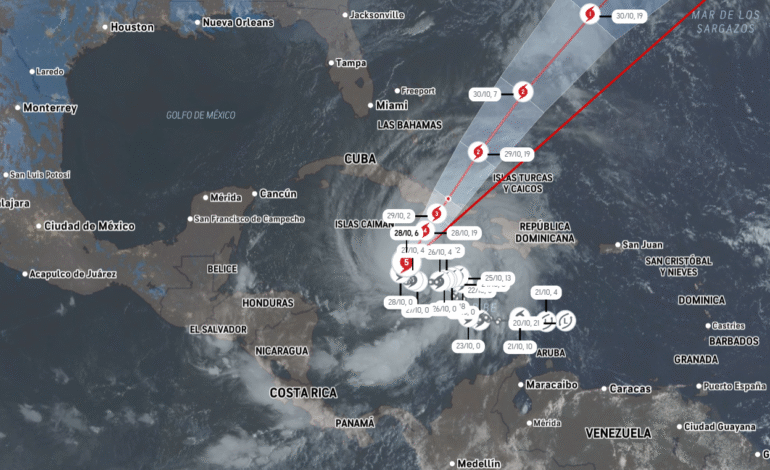National emergency in Jamaica due to Hurricane Melissa
Category 5 Hurricane Melissa batters Jamaica with extreme winds and flooding that threatens historic disaster.

Hurricane Melissa, now a Category 5 hurricane, is heading toward Jamaica today with unprecedented force for the island. Residents are preparing for what they describe as "the biggest natural disaster" in decades. Authorities are warning of a national emergency of historic magnitude.
Historical intensity
According to the U.S. National Hurricane Center (NHC), Melissa is packing sustained winds near 280 km/h (175 mph).
It is expected to make landfall in Jamaica in the coming hours, and experts say it could be the most powerful hurricane to ever directly hit the island.
The slowed trajectory—it's moving at just 4-11 km/h—aggravates the situation, as a system of this intensity that remains over an area for a longer period of time increases the risk of flooding and landslides.
Expected impacts and evacuations
A storm surge of up to 4 meters (≈13 feet) is expected on the southern coast of Jamaica, putting low-lying communities and coastal areas at immediate risk.
Rainfall could reach 40 inches (~1,000 mm) in mountainous areas of the country, producing outbreaks of flash floods and landslides.
More than 1.5 million people could be directly affected in Jamaica, according to the International Federation of Red Cross and Red Crescent Societies (IFRC).
Authorities have ordered mandatory evacuations in the most vulnerable areas and have set up hundreds of shelters. However, many people are reportedly still resisting evacuation, which exacerbates the risk.
Caribbean region also on alert
Melissa isn't just threatening Jamaica. Already in the northern Caribbean, deaths from landslides and flooding have been reported: at least seven people have died in Haiti, the Dominican Republic, and Jamaica combined.
In eastern Cuba, more than 600,000 people have been evacuated in preparation for the hurricane's arrival after its passage through Jamaica.
Factors behind its strength
Scientists emphasize that Melissa intensified extremely rapidly thanks to the exceptionally warm waters of the Caribbean Sea and an atmosphere that favors its development. This process of "rapid intensification" is being observed with increasing frequency, associated with climate change.
Melissa's unusually slow motion is also part of the pattern that causes storms like this to generate much more damage than a simple category number might indicate.
Key message for the population
If you are in Jamaica or the impact zone: evacuate immediately if you are in coastal, low-lying, or landslide-prone areas.
Take shelter in safe structures, away from windows, obey local authorities, and do not leave until it is declared safe.
For people outside the direct impact zone: Stay informed, as secondary effects (waves, dangerous currents, flooding) could also affect adjacent areas.
After a hurricane, the damage can be long-lasting: power outages, unsafe water, and blocked roads, so preparation and information are key.
For more stories like this, follow More Latin.
Sources:
